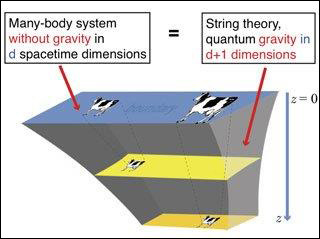This will be a no-reference piece. I will not be checking my claims or researching as I write. I write these from time to time just to summarize and organize my knowledge on topics that I’ve been thinking about. Consequently, some of the details may be wrong.
In fact, given that some of this material deals with quantum mechanics (which I have a very shaky understanding of) and theoretical mathematics and cosmology (absolutely no understanding) it will certainly be wrong in some respects. Nevertheless, the ideas are interesting.
I will NEVER post anything intended to fully inform you about a subject (unless the focus is on my feelings or experience). I have a masterful knowledge of almost no subject, but a workable knowledge of many and my goal is usually to introduce people to ideas or stimulate curiosity or introduce people to another viewpoint. THAT is the true purpose of even good classroom instruction, actually-not so much to fully inform the audience but to imbue them with a desire to learn more.
Nick Bostrom is a philosopher famous for his work on existential threats to the future of humanity and his exploration of the simulation hypothesis. Elon Musk (and The Matrix franchise) are certainly more famous and more responsible for popularizing it. I used to be fascinated by the simulation hypothesis… and then I realized: if all of this is a simulation, if anything could be a simulation, so what? That actually tells us nothing about reality, at least nothing useful. People who scoff at the idea of creator God watching over us all are enchanted by the idea of a creator simulation programmer watching over us all.
I (briefly) dated a girl who said things like “I believe the universe is just God coming to understand itself” (a pretty interesting idea, actually, but not an original one) and “I believe that we’re all living in a simulation.” Privately I thought she should probably pick one of those two. They can logically coexist but at some point we should probably stop formulating metanarratives for reality and-maybe-expend energy to address smart phone addiction in adolescents or to be more gracious to others. Incidentally, she believed in astrology too (really!). What a fascinating picture of reality.
I won’t dive in Bostrom’s full original paper (I think it’s 14 pages, free in PDF form on his website) but his postulates go like this:
Either:
We have or could, someday, potentially have the ability to create immersive and unconscious simulations and we would choose not to.
We have or could, someday, potentially have the ability to create immersive and unconscious simulations and we would choose to.
There is some logical or practical or theoretical barrier to the idea of us ever creating such simulations.
The first (1) seems unlikely. We are curious and headstrong and I think if we could we probably would. The second (2) is the possibility he estimates to be most likely and I will return to it in a moment. The third (3) ends the supposition.
If (2) is the case and we (or whoever) could create simulations then in that world simulations would always outnumber “base realities”. Think about it: one base reality could give rise to millions or billions of simulations… but not vice versa. That is why Elon (without giving Bostrom the credit, as far as I know) can say (approximately) “the chances that this is a simulation outnumbers the chance that this is base reality by billions to one.”
I forget exactly the probability Bostrom assigns to each possibility (and it barely matters since it’s pure speculation) but the bottom line is: either there’s some hard barrier against simulations being created in our universe… or we’re probably in one.
(Image from Big Think)
I was going to include a brief explanation of the multiple worlds interpretation of quantum theory, but I ran out of attentiveness and so this is truncated: two topics rather than three. I was going to start with this, the most confusing and detail-rich theory: the holographic universe, but I decided against it. Perhaps you’ll see why.
String Theory (or Superstring or M- or M-Brane or whatever they’re calling it right now) is a vast complex of mathematical theory which claims to represent physical reality. It originates not so much from experimental observation or deduction as from an effort to piece together the mathematics of things which we know to be true (and which we know to be incomplete), such as spacetime relativity and quantum mechanics. Trying to jam both of these theoretical constructs into a whole has given rise to an idea of superstrings: we live in a universe with many (11?) extra, imperceptible dimensions which are tiny and irrelevant at the scales we exist daily. nevertheless, these extra dimensions do have implications for physics and, in fact, every particle is really just a tiny, folded “string” (of nothing, really… it’s just a mathematical artifact with no associated object. Asking what are strings made of is like asking about the volume or mass of electrons). The strings wiggle and vibrate at different frequencies and the periods of these curves dictate the energy and other physical properties of what we perceive as particles. That’s the pedestrian part.
String Theory has a major flaw in that it has not been verified experimentally, and, in fact, with our current technology and materials science it probably can’t be verified. However, it does seem to erect a coherent structure which (just barely) accommodates relativity and quantum theories. It also has some eerie and thrilling mathematical byproducts. One of these is the ADS-CFT duality.
ADS stands for ‘Anti-De Sitter Space’ which is a negatively curved topology of space. In a positively curved space if you travelled in a straight line you would eventually return to your starting point (the distance required depends on the degree of curvature). In a flat space (which seems to be what our universe is… but perhaps the curvature is just really, really gradual) you continue outward forever. In a negatively curved space you also continue outwards forever. The shapes used (imperfectly) to visualize each of these is: a torus (donut), a cube, and a hyperbolic plane.
This (below) is a slightly different modelling. Keep in mind these are approximations to represent spaces which cannot be fully described in 2d:
De Sitter space is positively curved and “Anti-De Sitter” (ADS) Space is negatively curved. If you mathematically represent our (apparently) 4-dimensional reality (3 spatial dimensions + time) in one less dimension (so putting all the information of our 3 spatial dimensions onto a flat plane) and represent time as stacked slices of this 2-d negatively curved space (think: a stack of pringles) very strange and profound mathematical truths arise, including a complete theory of gravity (which we do not otherwise have).
CFT stands for conformal field theory and this is complicated but this basically refers to a field or plane which is scale invariant and represents all information in 2-dimensions. Basically: the full reality of our 3-dimensional space can be represented in 2 dimensions, as long as the 3rd dimension is represented using different ‘zooms’, or changes in resolution. For the image below, all three of those planes can be fully represented on the bottom one (as long as the top two are shrunk at different scales) and embedded within it). This is scale invariance. The angles and spatial relationships within each space do not change as the scale shrinks or grows.
All of spatial, human-scale reality could theoretically be encoded on 2 dimensions, with relationships between different places actually affected by changes in scale on that surface. When you try to depict a negatively curved space in 2 dimensions and then stack the 2 dimensions to signify time (moving forward from slice to slice) strange and profound and unexplained phenomena in our reality emerge, as if by magic.
If the ADS-CFT convergence relates to our reality, then our universe as actually all “encoded” on a 2d plane, and everything we see and deal with in our lives is actually being “projected” from a 2 dimensional plane infinitely far away.
This all sounds like clever nonsense to me… and this is also difficult to test experimentally. However, black holes have been proven (?) to represent the information of every object that falls into them (whereupon the changes which happen to it are lost to the outside observer-the threshold of this disconnection is the event horizon) on their surfaces. The mass and information content of a black hole are determined by their surface area, not their volume. This is a very strange (and actually experimentally verified) conclusion. This ability to represent 3 dimensions of information and relationships on a 2d surface is known as the holographic principle.
You can try to visualize this and you might feel like you’re close but I don’t think humans are capable of visualizing these concepts or spaces (not fully) just as we’re not capable of visualizing infinity. From what I can tell even Leonard Susskind and Paul Dirac couldn’t visualize these ideas, so don’t feel bad.
Our psychology and sensory apparatus developed to work in a 3d space with linear time and causality… but we know that objects are not what we perceive (they’re mostly empty space and tiny bits of energy, held together by the strong nuclear force). We know that time is not what we perceive and that event sequences and causalities can change as vantage points and conditions are changed. Is it impossible to believe that this is all a mathematical play of energy and force, originating infinitely far away and radically, unimaginably different from the world we see?









